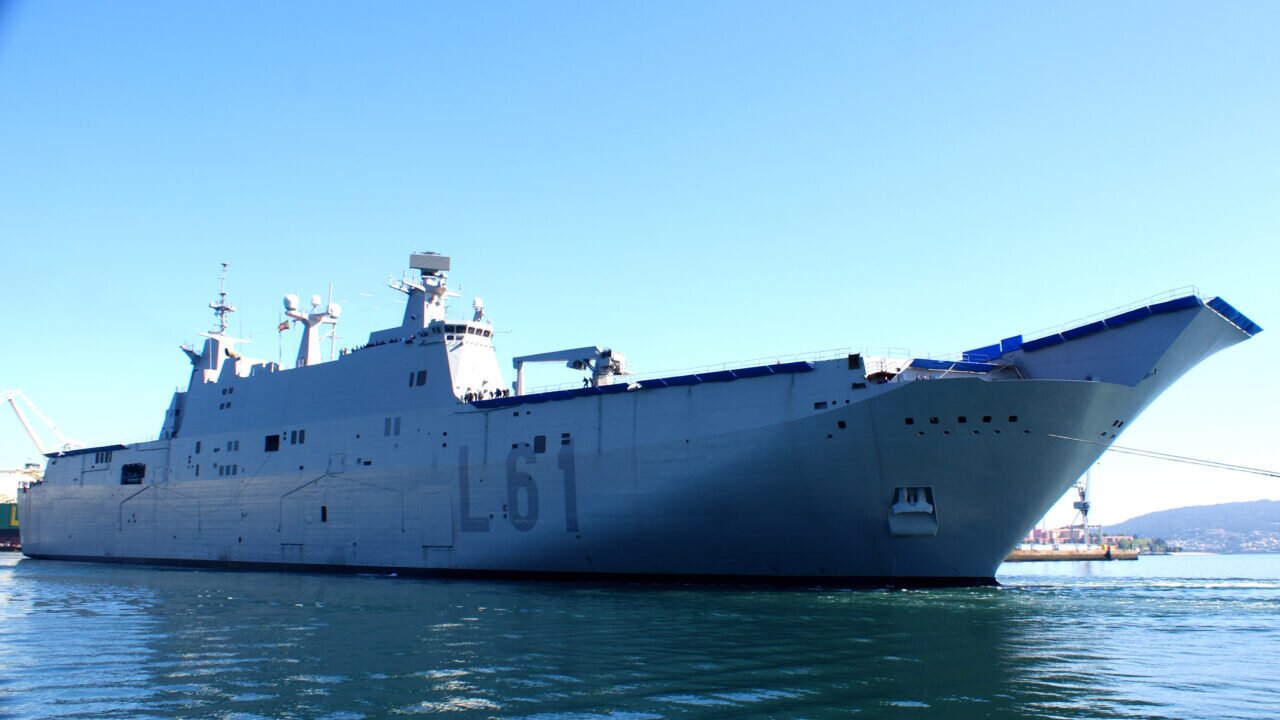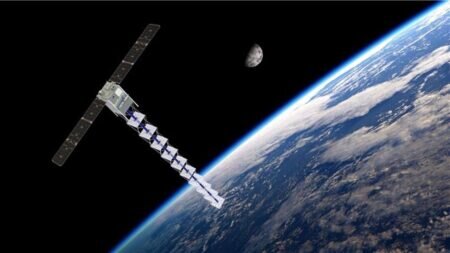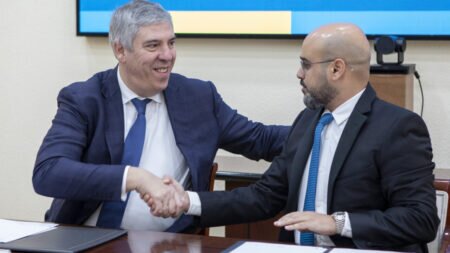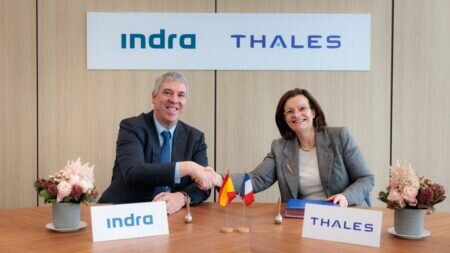The first real military maneuvers of the new EU Rapid Deployment Capacity carried out under the command of the Spanish Armed Forces during the MILEX-23 exercise enabled Indra and its industrial partners to demonstrate the capabilities of the future European Command and Control Systems by reproducing the planning of a major mission such as the one being carried out off the coast of Cadiz and mobilizing no fewer than 3,000 troops from 19 countries.
The core team members of the EC2 (European Command and Control) European Defence Fund project, made up of Leonardo, Eviden, LuxGovSat, and Thales Edisoft and coordinated by Indra, were transferred to the Juan Carlos I aircraft carrier to deploy a command and control center connected to the main HQ set up in Brussels and work on the concurrent planning of a large-scale amphibious landing such as the one taking place off the coast of Cadiz.
On the ground, the actions of the MILEX-23 exercise unfolded as planned in an operation designed to restore security to a country outside Europe that was being destabilized by the actions of a major terrorist group. In parallel to the commanders leading the operation, the industrial group led by Indra displayed the benefits that the future system will bring, enabling a group of officers to concurrently plan a mission with the complexity of the one that was being carried out, without the need to be physically in the same place, requiring the mobilization of the air, land, and naval means deployed in a perfectly synchronized manner.
The Command and Control System being developed under Indra’s management by Leonardo, Eviden, LuxGovSat, and Thales Edisoft, and 17 other companies demonstrated the flexibility and accuracy with which a mission of these characteristics can be prepared over a whole week, from 16 to 22 October.
Indra’s Land and Command and Control Systems Director, Antonio Hernández, declared that this recreation has made it possible to “display some of the capabilities set to form part of the future European Command and Control System (EC2) and undergo development in subsequent phases, and confirm which of them can be deployed at this early stage”.
In particular, the exercise tested the maturity of the planning system, as well as the so-called “day zero” system, which permits the immediate deployment of command and control capabilities in the area of operations. Capabilities in satellite communications and security systems allowing work in a multidomain environment (land, sea, air, cyber) via a single position were also demonstrated.
The development of the European Command and Control System (EC2), which is part of the Permanent Structured Cooperation (PESCO) project named EUMILCON and leaded by Spain together with France, Germany, Italy, Luxembourg and Portugal, began in 2019 after it was selected as one of the initial projects of the European Defence Industrial Development Program (EDIDP). In 2022 the project received additional financial support from the European Defence Fund (EDF). Its development will be completed by 2025 and its aim is to provide the European External Action Service (EEAS) with the capabilities required to coordinate missions abroad that involve several EU countries, thus complying with the European Strategic Compass promoted by the EU Council, which defines the plan to be followed to reinforce the EU’s Common Security and Defence Policy (CSDP).









